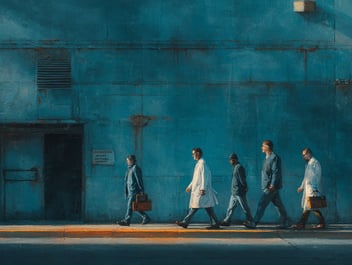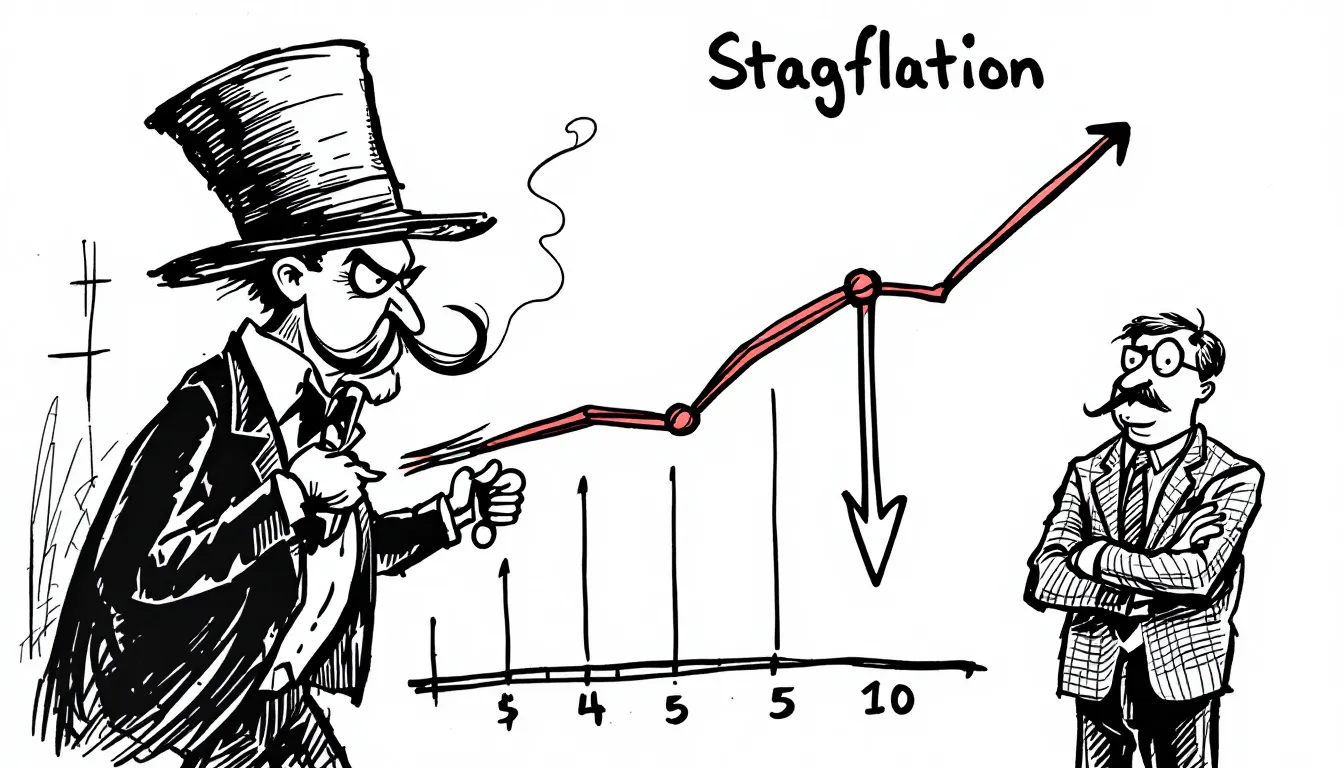
Understanding Stagflation: Causes, Impacts, and Solutions
Stagflation is when an economy experiences slow growth, high inflation, and rising unemployment simultaneously. This rare and challenging situation complicates economic management. In this article, we will examine its causes, impacts, and solutions.
Key Takeaways
-
Stagflation is characterized by stagnant economic growth, high inflation, and high unemployment, creating a complex economic scenario that is difficult to manage.
-
The 1970s stagflation serves as a historical example, highlighting the role of supply shocks, poor economic policies, and monetary policy failures in contributing to this phenomenon.
-
Effective strategies to combat stagflation include diversifying investments for individuals and implementing proactive fiscal policies focused on productivity for governments.
What Is Stagflation?
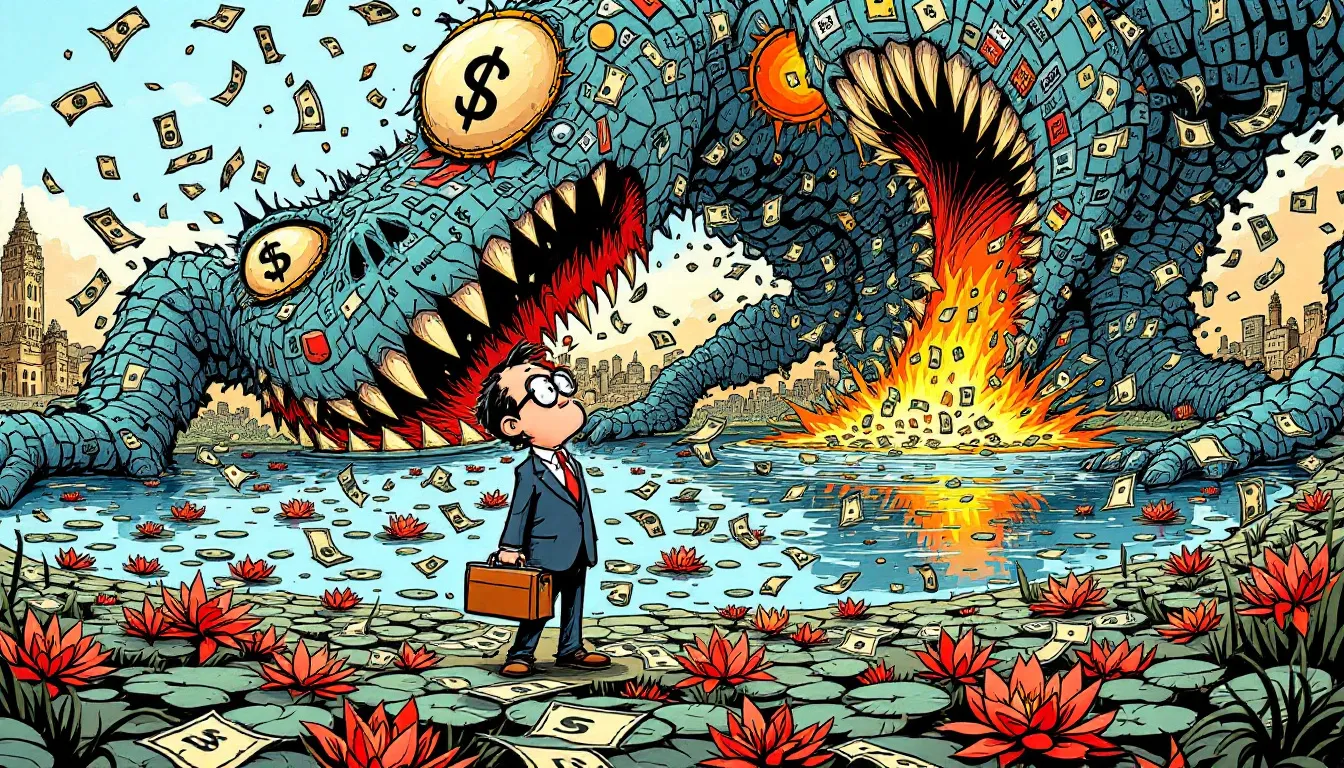
Stagflation is a term that combines the concepts of economic stagnation and inflation, creating a scenario where an economy experiences stagnant growth, high inflation, and high unemployment simultaneously. Unlike typical inflation, which often occurs during periods of economic growth, stagflation is marked by persistent economic slowdown coupled with rising prices and an increasing unemployment rate.
The complexity of stagflation lies in its contradictory nature. Normally, inflation and economic growth move in tandem; however, when stagflation occurs, this relationship breaks down. During periods of stagflation, attempts to correct one aspect of the crisis often exacerbate another. For instance, measures to curb inflation might hinder economic growth further, while efforts to stimulate growth could lead to even higher inflation.
Understanding the key features of stagflation is crucial. This phenomenon features slow economic growth, high inflation, and rising unemployment, which collectively decrease consumer spending and economic activity. The interplay of these factors makes stagflation a particularly challenging issue to address, necessitating a nuanced approach to economic policy and management.
Historical Context of Stagflation

Understanding stagflation can be easier by examining its most notable occurrence in the 1970s. This decade is often cited as the quintessential period of stagflation, marked by a series of economic missteps and external shocks that crippled economies worldwide. One of the most significant events was the oil embargo of 1973, when the Organization of Petroleum Exporting Countries (OPEC) quadrupled oil prices, causing a dramatic increase in production costs and consumer prices.
The 1970s stagflation was further fueled by significant budget deficits driven by extensive military and social spending. This period of economic turmoil led to widespread dissatisfaction among the public, as inflation soared and unemployment rates climbed.
The lessons learned from this era highlight the importance of sound economic policies and the dangers of external supply shocks.
Causes of Stagflation
Stagflation can be attributed to several interrelated factors. One of the primary causes is supply shocks—sudden disruptions in the availability of key commodities, such as oil price, which lead to increased production costs and higher consumer prices.
Another significant factor is poor economic policies, including high tariffs and fiscal mismanagement, which can stifle economic growth and exacerbate inflation. Monetary policy failures significantly contribute to stagflation. When central banks fail to adjust interest rates appropriately or manage the money supply effectively, it can lead to persistent inflation and economic stagnation.
Identifying these causes aids in developing strategies to prevent and mitigate stagflation.
Supply Shocks
Supply shocks are perhaps the most immediate and visible causes of stagflation. These occur when there is a sudden increase in the cost of essential commodities, such as oil, which drastically raises production costs for businesses. The 1970s oil crisis is a prime example, where disruptions in oil supply led to skyrocketing prices for goods and services, pushing the economy into a state of stagflation.
The interaction between rising prices and low economic growth creates a vicious cycle that is hard to break. As costs for raw materials and consumer goods rise, businesses face increased expenses, which they often pass on to consumers, leading to further inflation and economic stagnation. This form of cost-push inflation highlights the complexities of managing an economy during a supply shock.
Poor Economic Policies
Poor economic policies can exacerbate the conditions leading to stagflation. Policies that harm industry while increasing the money supply, such as high tariffs and excessive regulations, can stifle economic growth and inflate prices. For example, tariffs imposed by administrations like Richard Nixon’s and Donald Trump’s have historically contributed to stagflation by raising costs for consumers and restricting economic activity.
Effective fiscal policies stimulate growth without worsening inflation. Poorly designed policies and fiscal mismanagement drain government resources and increase inflationary pressures, leading to prolonged economic stagnation.
Monetary Policy Failures
Monetary policy failures are another critical factor in the onset of stagflation. Loose monetary policies, such as keeping interest rates too low for too long, can lead to easier access to credit and higher inflation. When central banks increase the money supply without corresponding economic growth, it results in price inflation and economic instability.
The removal of the gold standard in the early 1970s, which allowed for greater fluctuations in currency value, also contributed to the unstable prices seen during periods of stagflation. These monetary policy missteps illustrate the delicate balance central banks must maintain to avoid triggering stagflation.
Impacts of Stagflation on the Economy
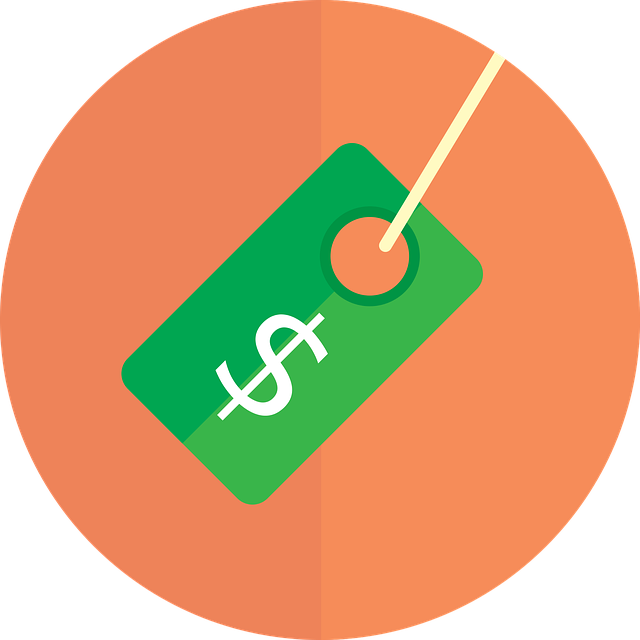
Stagflation profoundly impacts the economy. Low economic growth results in stagnant economic activity and limited investment opportunities, which in turn hampers overall economic development. Rising prices during stagflation reduce consumer purchasing power, leading to decreased consumer spending and overall economic activity.
High unemployment rates exacerbate the economic crisis and strain on households, leading to lower disposable incomes and increased financial hardships. Together, these issues create a challenging environment for economic recovery, making it difficult for policymakers to implement effective solutions.
Economic Stagnation
Economic stagnation during stagflation is characterized by a lack of significant economic growth, which reduces overall economic activity. Higher prices lead to decreased consumer spending, as people have less purchasing power and cut back on non-essential expenditures. This reduction in spending further exacerbates economic stagnation, as lower demand leads to reduced production and slow growth.
Inflation can persist even as consumer demand diminishes, causing continued price increases and further economic stagnation. This rising inflation despite low demand is a hallmark of stagflation, making it a particularly challenging economic condition to address.
Rising Prices
Rising prices during stagflation significantly impact consumer spending, as individuals must allocate more of their budget to basic necessities. Unlike a recession, which may see inflation decline as economic activity slows, stagflation maintains high price levels despite stagnant growth, making it particularly challenging for consumers.
High import costs resulting from tariffs contribute to rising consumer prices, leading to consumers paying more for a variety of goods. This sustained inflationary pressure creates a challenging environment for both consumers and businesses, as costs continue to rise while economic growth remains stagnant.
High Unemployment
High unemployment during stagflation leads to fewer job opportunities and increased layoffs in various sectors. Businesses often do not operate at full capacity, resulting in reduced demand for labor and increased job insecurity. This high unemployment rate further strains the economy, as households have less disposable income and face greater financial hardships.
The increased job insecurity prompts employees to accept lower wages, which can further reduce consumer confidence and exacerbate economic stagnation. This cycle of high unemployment and reduced spending creates a difficult environment for economic recovery.
Federal Reserve's Role in Managing Stagflation
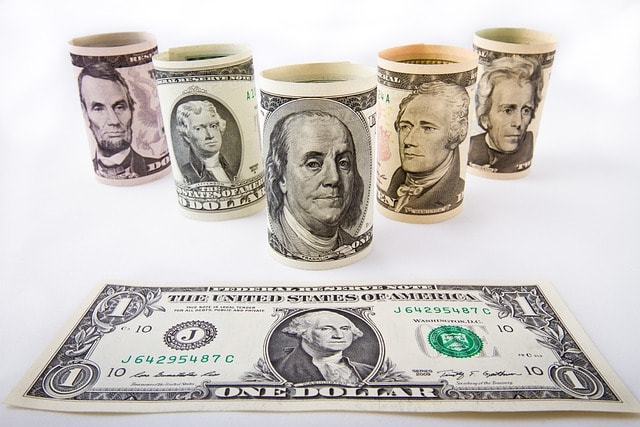
The Federal Reserve’s role in managing stagflation is complex, as lowering interest rates might worsen inflation without boosting growth. During stagflation, the Fed confronts a dilemma where traditional anti-inflation policies conflict with growth-supporting measures.
Historically, the Fed’s responses to stagflation, particularly in the 1970s, included restrictive monetary policies aimed at stabilizing prices. However, these policies often came at the cost of slowing economic growth further and increasing unemployment. Policymakers must find a delicate balance between combating inflation and supporting economic growth to effectively manage stagflation.
The Federal Reserve aims to balance these competing priorities during stagflation. This demands a nuanced approach, considering both short-term and long-term economic impacts.
Comparing Stagflation to Inflation and Recession
Stagflation presents unique challenges that differ significantly from typical inflation or recession scenarios. Unlike inflation, which generally occurs alongside economic growth, stagflation combines high inflation with stagnant economic conditions, making it more complex and severe. Policymakers must manage rising prices and high unemployment, balancing competing economic priorities.
Raising interest rates to combat inflation can inadvertently hinder economic growth, posing a complex challenge. This dual challenge makes stagflation particularly difficult to manage, as traditional economic policies may not be effective.
Differences Between Stagflation and Inflation
Stagflation is characterized by simultaneous high inflation, stagnant economic growth, and elevated unemployment, unlike standard inflation which can occur alongside economic growth. While inflation primarily refers to the general increase in prices, stagflation also includes stagnant economic growth and high unemployment, complicating economic recovery.
In stagflation, the economy experiences a decline in production and job growth, contrasting with inflation that often promotes economic expansion. This unique scenario requires a different set of economic policies and strategies to address the multifaceted challenges.
Stagflation vs. Recession
Recession focuses on declining economic activity, while stagflation combines recessionary trends with inflation, making it a more complex and challenging economic situation. Unlike a recession, which includes falling economic activity and prices, stagflation combines rising prices with stagnant growth and high unemployment.
Stagflation is often seen as worse than a recession because of its combination of high inflation and stagnant growth. This combination of factors makes stagflation a particularly severe and difficult economic condition to manage.
Preparing for Stagflation

Preparing for stagflation requires both individual and policy-level strategies. Investors should diversify their portfolios to spread risk and protect against inflation in a stagflation environment. Governments should focus on improving productivity and implementing proactive fiscal policies to mitigate the effects of stagflation.
Adopting these strategies helps both individuals and policymakers navigate the challenging conditions of stagflation. This dual approach ensures a more resilient economy capable of withstanding the multifaceted impacts of stagflation.
Investment Strategies
Diversification remains crucial during stagflation to manage risks associated with both inflation and economic stagnation. Spreading investments across stocks, real estate, and gold can reduce the impact of stagflation on portfolios. Dividend-paying stocks, for example, provide steady income, making them a reliable choice during such volatile times.
Additionally, investing in commodities can act as a hedge against inflation. Commodities tend to perform well during periods of rising prices, offering a protective buffer against the eroding purchasing power of money. Combining diversification with defensive investments creates a robust strategy to protect portfolios during stagflation.
Policy Recommendations
Extremely proactive economic policymaking is key to preventing stagflation. Governments should focus on increasing productivity and implementing effective fiscal policies that stimulate growth without exacerbating inflation. This includes investing in infrastructure, education, and technology to boost economic efficiency and output.
Economists agree that increasing productivity is essential for achieving higher growth without causing extra inflation. Fostering innovation and efficient resource use helps create a resilient economy capable of withstanding stagflation pressures, even in the face of slowing growth.
Historical lessons and modern applications of these policies highlight their importance in mitigating the adverse effects of stagflation.
Summary
In conclusion, stagflation is a complex and challenging economic condition characterized by stagnant growth, high inflation, and rising unemployment. Understanding its causes, such as supply shocks, poor economic policies, and monetary policy failures, is crucial for developing effective strategies to combat it. The impacts on the economy are profound, affecting consumer spending, investment opportunities, and overall economic health.
By preparing for stagflation through diversified investment strategies and proactive economic policies, both individuals and governments can better navigate these turbulent times. Staying informed and making thoughtful decisions can help mitigate the adverse effects of stagflation, ensuring a more stable and resilient economic future.
Frequently Asked Questions
What is stagflation?
Stagflation is characterized by stagnant economic growth, high inflation, and elevated unemployment, leading to a challenging economic environment. It poses significant difficulties for policymakers and can severely impact consumers and businesses alike.
What caused the stagflation in the 1970s?
The stagflation in the 1970s was primarily caused by the 1973 oil embargo, resulting in skyrocketing oil prices, budget deficits, and ineffective economic policies. This combination led to persistent inflation coupled with stagnant economic growth.
How do supply shocks lead to stagflation?
Supply shocks lead to stagflation by increasing production costs, as seen with sudden oil price hikes, which result in higher consumer prices alongside stagnant economic growth. This dual impact creates an environment characterized by inflation and unemployment.
What role does the Federal Reserve play in managing stagflation?
The Federal Reserve plays a crucial role in managing stagflation by attempting to balance the challenge of controlling inflation while supporting economic growth, though its capacity to lower interest rates is restricted to avoid worsening inflationary pressures.
How can investors protect their portfolios during stagflation?
To protect portfolios during stagflation, investors should diversify across asset classes, including stocks, real estate, and commodities, while prioritizing defensive investments like dividend-paying stocks. This strategic approach can help mitigate risks and preserve capital.
%20512x512%20google%20store%20app%20logo%20SEPT%2024%2c%202025%20(4)-png.png?width=51&height=51&name=USE!!%20)%20512x512%20google%20store%20app%20logo%20SEPT%2024%2c%202025%20(4)-png.png)


